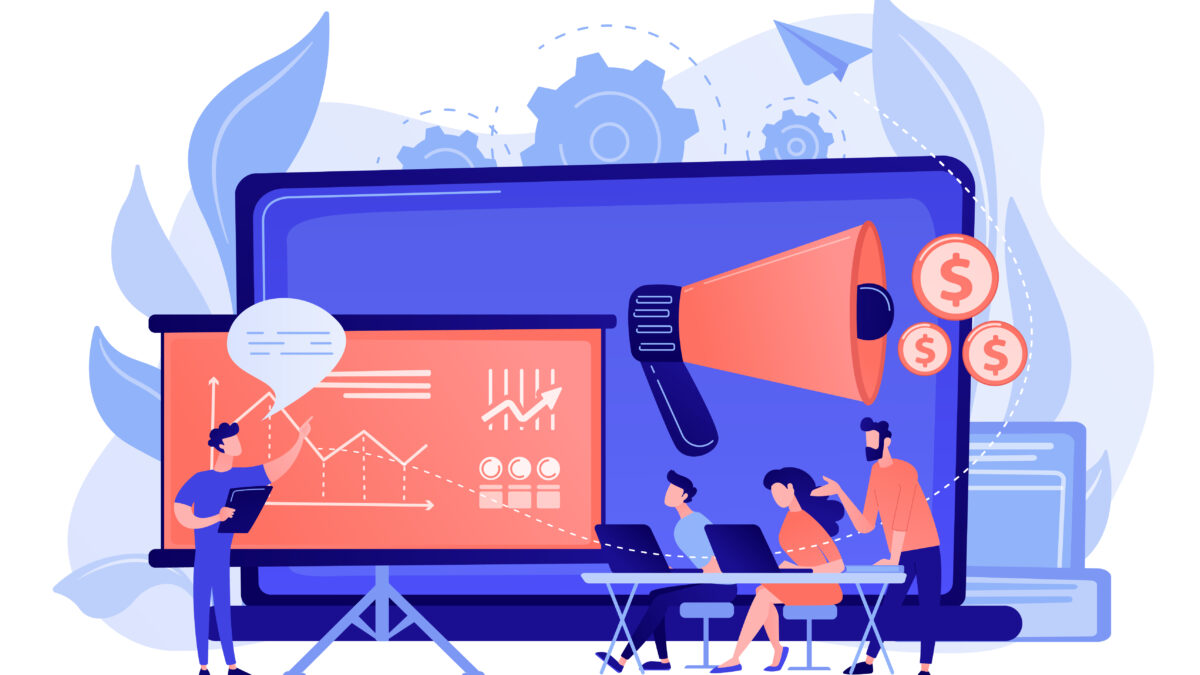What Is Programmatic Advertising? A Complete Guide for 2025
Introduction
In today’s fast-paced digital ecosystem, traditional ad buying methods are becoming obsolete. Manual negotiations, insertion orders, and guesswork are being replaced by programmatic advertising a data-driven approach that automates ad placements in real time.
But what exactly is programmatic advertising, and why is it revolutionizing digital marketing in 2025? Let’s break it down.
What Is Programmatic Advertising?
Programmatic advertising is the automated process of buying and selling digital ad inventory using AI, data analytics, and real-time bidding (RTB). Instead of human negotiations, software algorithms purchase ad space across websites, apps, and social platforms instantly targeting the right audience, at the right time, and in the right context.
In simpler terms, programmatic advertising allows marketers to:
- Automate ad buying and placement
- Leverage audience data for better targeting
- Optimize campaigns for performance and cost efficiency
This automation ensures precision, scalability, and measurable results, making it a cornerstone of modern digital marketing.
How Does Programmatic Advertising Work?
The process might sound complex, but it runs on a simple yet powerful framework:
1. Advertiser Sets Campaign Goals
The advertiser defines objectives like reach, conversions, or brand awareness along with target audience criteria such as demographics, location, and device type.
2. Demand-Side Platform (DSP) Activates the Campaign
The advertiser’s DSP connects to multiple ad exchanges to bid on available ad inventory that matches the campaign criteria.
3. Supply-Side Platform (SSP) Lists Available Inventory
Publishers use SSPs to list their available ad space. The SSP communicates with ad exchanges in real time.
4. Real-Time Bidding (RTB) Happens
Each ad impression is auctioned in milliseconds. The DSP bids automatically based on data, and the highest bid wins.
5. The Ad Is Displayed Instantly
Once the bid is won, the ad is shown to the user—all within a fraction of a second.
Types of Programmatic Advertising
Programmatic isn’t one-size-fits-all. Here are the main types used by advertisers today:
1. Real-Time Bidding (RTB)
The most common type—ads are bought and sold in open auctions, allowing flexibility and cost-efficiency.
2. Private Marketplaces (PMPs)
Exclusive auctions where premium publishers invite select advertisers, ensuring brand safety and higher-quality placements.
3. Programmatic Direct
Deals are made directly between advertisers and publishers using automation—ideal for brands that prefer guaranteed impressions.
4. Preferred Deals
Advertisers get first dibs on premium inventory at pre-set prices before it enters open auctions.
Key Benefits of Programmatic Advertising
1. Unmatched Efficiency
Automation eliminates manual negotiations and paperwork, saving time and reducing human error.
2. Enhanced Targeting
Marketers can target audiences based on:
- Demographics (age, gender, location)
- Behavioral data (interests, browsing history)
- Contextual relevance (content type or keywords)
3. Real-Time Optimization
Campaigns can be tweaked on the go—budget reallocation, creative testing, and audience refinement happen dynamically.
4. Better ROI and Transparency
With real-time analytics, brands know exactly where every penny goes and how each impression performs.
5. Omnichannel Reach
Programmatic campaigns can run across display, video, mobile, connected TV (CTV), and digital out-of-home (DOOH) ensuring a unified brand presence.
Programmatic Advertising Trends in 2025
The landscape continues to evolve rapidly. Here are the major trends shaping 2025:
1. AI-Powered Targeting
Artificial intelligence is refining ad targeting using predictive analytics, helping marketers identify high-intent audiences before they convert.
2. Cookieless Advertising
As third-party cookies phase out, advertisers are shifting toward first-party data and contextual targeting to maintain personalization.
3. Connected TV (CTV) Growth
CTV programmatic spend has surged as more users move to streaming platforms like Netflix, Hulu, and YouTube TV.
4. Sustainability in Advertising
Brands are now investing in green media buying, optimizing energy use in digital ad delivery to reduce carbon footprint.
5. Privacy and Compliance
Regulations like GDPR and CCPA continue to shape how data is collected, stored, and used in programmatic campaigns.
Programmatic Advertising vs Traditional Ad Buying
| Feature | Programmatic Advertising | Traditional Ad Buying |
| Process | Automated via algorithms | Manual negotiations |
| Speed | Milliseconds | Days or weeks |
| Targeting | Data-driven, precise | Broad and limited |
| Transparency | Real-time tracking | Limited reporting |
| Optimization | Continuous and automated | Manual adjustments |
It’s clear that programmatic advertising is faster, smarter, and more measurable—a must-have for any performance-driven brand.
How to Get Started with Programmatic Advertising
Here’s a step-by-step roadmap:
- Define Your Objectives: Whether it’s brand awareness, engagement, or lead generation.
- Choose the Right Platform: Use a trusted Demand-Side Platform (DSP) that supports multiple ad exchanges.
- Leverage Data: Integrate first-party and third-party data for accurate audience segmentation.
- Create Engaging Ad Creatives: Optimize visuals and copy for relevance and conversion.
- Monitor & Optimize: Continuously review performance metrics like CTR, CPC, and conversion rate.
Why Choose iTMunch for Programmatic Advertising Services
At iTMunch, we specialize in Programmatic Advertising Services that maximize your brand’s reach and ROI. Our team combines AI-driven insights, premium inventory access, and end-to-end campaign management to ensure your message reaches the right audience at the right time.
We help you:
- Automate ad buying across channels
- Optimize spend for maximum conversions
- Maintain transparency and brand safety
- Deliver measurable results with advanced analytics
Explore our Programmatic Advertising Services and take your digital marketing to the next level.
Final Thoughts
Programmatic advertising isn’t just the future it’s the present of digital marketing. As technology evolves, the brands that embrace automation, data intelligence, and personalization will lead the market.
Don’t get left behind. Start leveraging programmatic advertising today to boost efficiency, precision, and profitability.
You May Also Like: What is Meta Advertising? Strategy, Benefits & Best Practices






